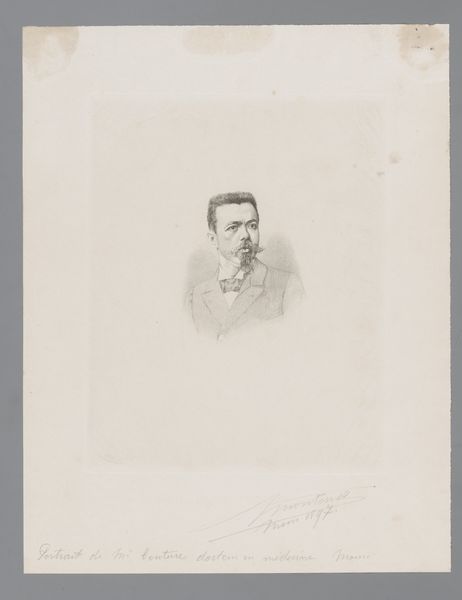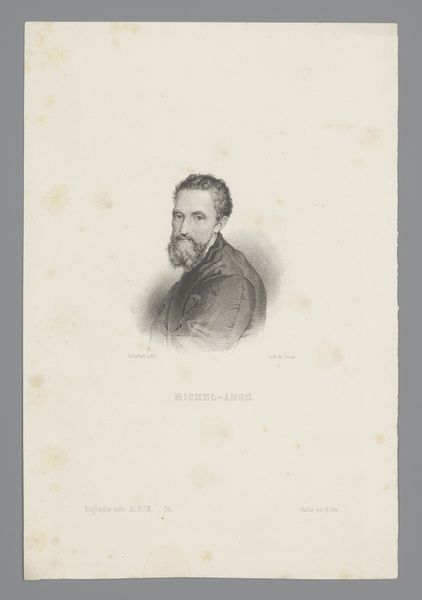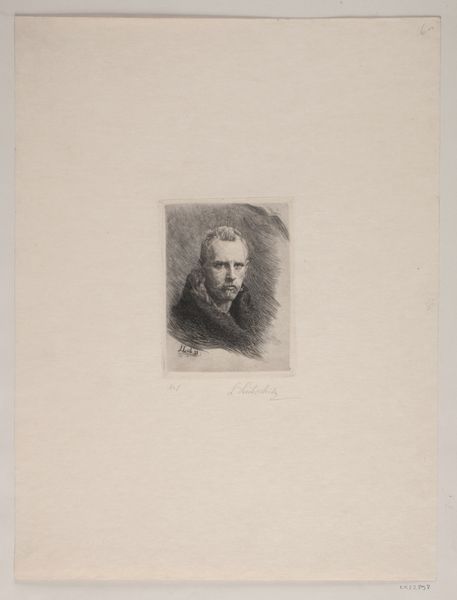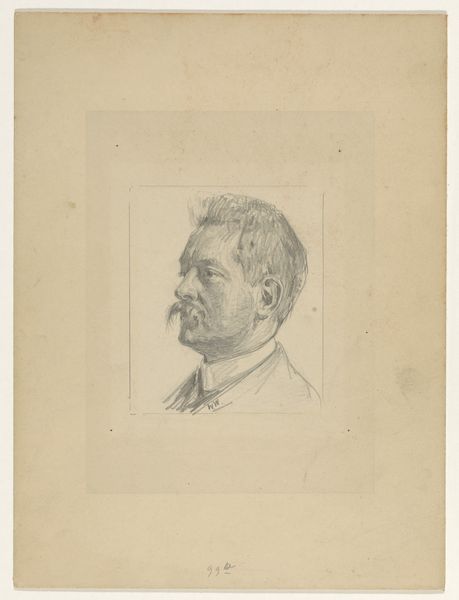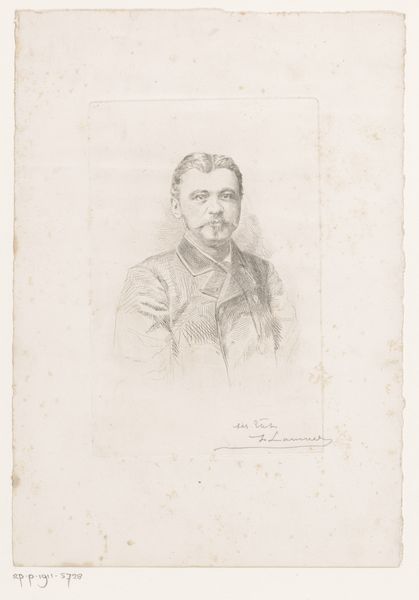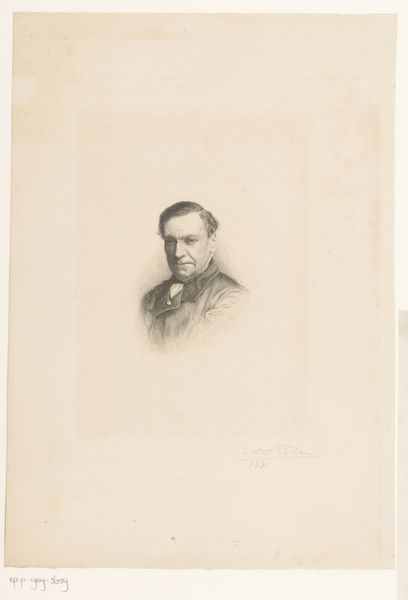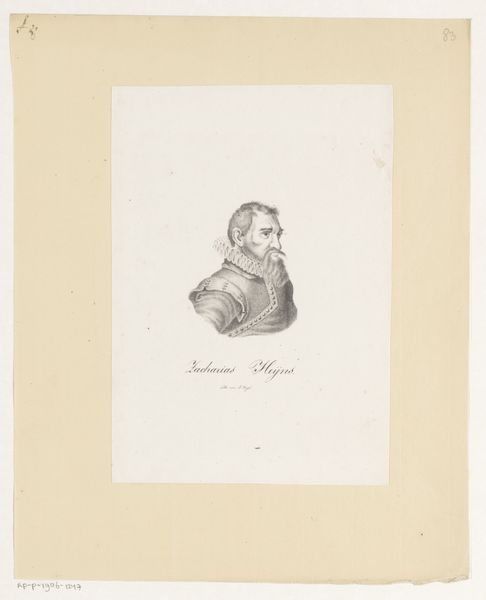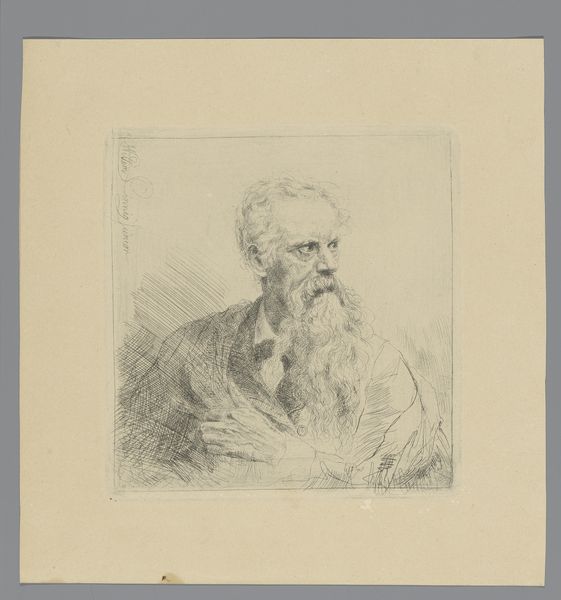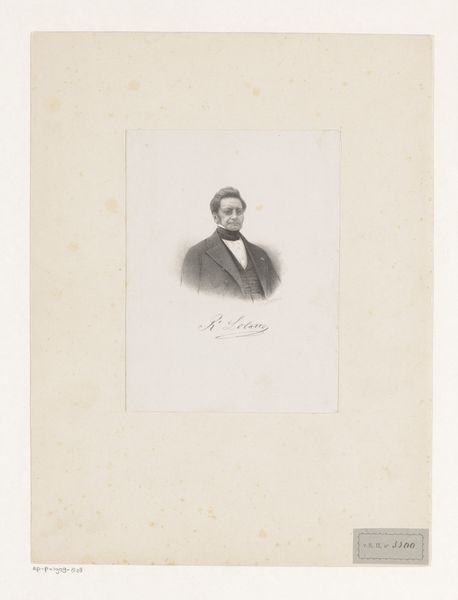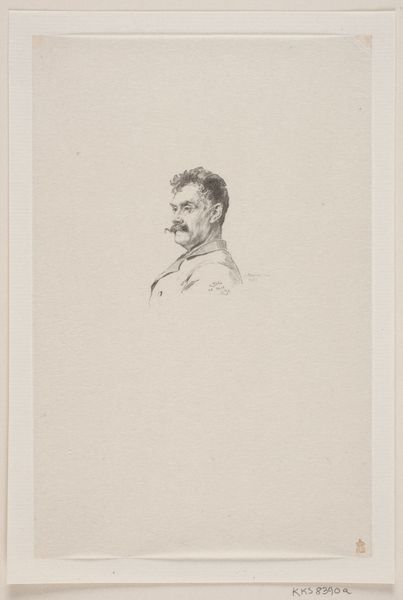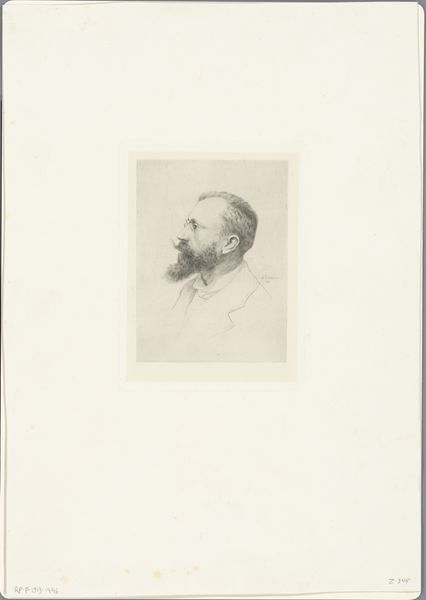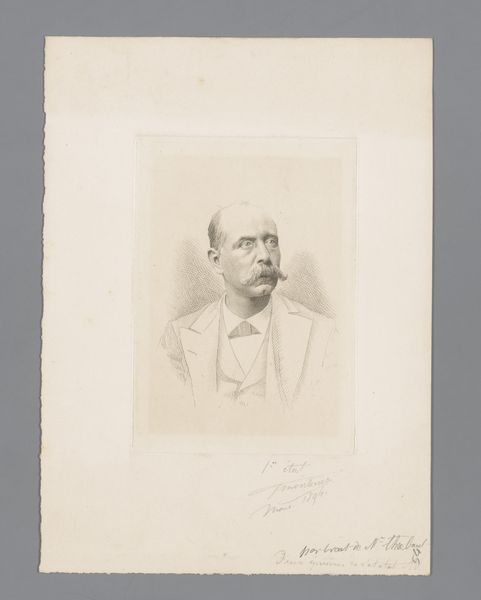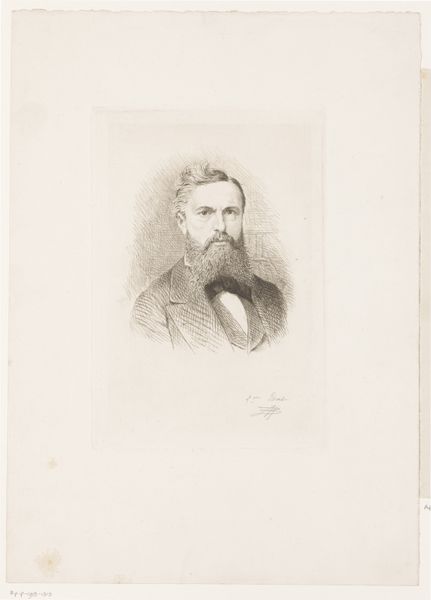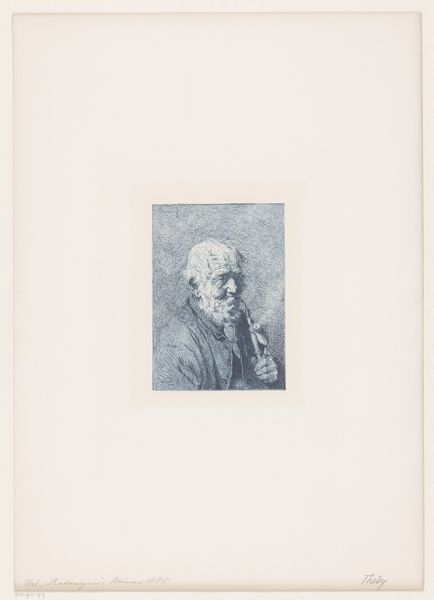
Dimensions: height 249 mm, width 200 mm
Copyright: Rijks Museum: Open Domain
Curator: Here we have Georges Montenez's 1896 pencil drawing, "Portret van een onbekende man, mogelijk Couture"—that translates to "Portrait of an unknown man, possibly Couture." Editor: There’s a certain melancholy hanging about him, don’t you think? The sketch is faint, almost ghost-like, especially against the aged paper. The detail in his face contrasts starkly with the unfinished body. Curator: That starkness highlights the conventions of late 19th-century portraiture—emphasis on capturing individual likeness but with a clear institutional bent. Artists like Montenez were wrestling with the academic standards expected by the Salon system while absorbing Impressionist aesthetics. The title itself points to this—speculating that the subject might be Couture, a renowned academic painter, speaks volumes. Editor: Right, Couture who pushed against realism. I’m fascinated by the materiality of the drawing, the artist's choice of pencil allowing for such subtle gradations and delicate lines. You can almost feel the texture of the paper, the pressure of Montenez’s hand as he built up the forms. Curator: Pencil offered accessibility and a certain intimacy, a shift away from the grand pronouncements of oil paint. Sketching gained prominence as capturing fleeting moments in a rapidly changing world. And it fed into visual culture at large via inexpensive methods of printmaking at that time. Editor: You see the seeds of reproduction and distribution in the material itself. It speaks of utility—of artistic study but also of democratizing portraiture. How might this circulate beyond an elite art world? Curator: Precisely. It blurs the lines between fine art study and mass-producible imagery. It anticipates shifts in artistic patronage, as well. This "unknown man" hints at the era's increasing democratization, perhaps gesturing toward capturing subjects outside established networks of power. Editor: Ultimately, the drawing acts like a residue of the past: from artist’s hand and paper. It provides so many rich and complex thoughts, connecting labour to process in a new and exciting way. Curator: Indeed. This sketch encourages us to look beyond surface appearances and delve into the socio-cultural forces that shaped its creation and the era.
Comments
No comments
Be the first to comment and join the conversation on the ultimate creative platform.
